The WPJ
THE WORLD PROPERTY JOURNALReal Estate Facts Not Fiction
Residential Real Estate News

Homes in Highest Risk Natural Disaster Cities Appreciated 170 Percent More Than the U.S. Market
Residential News » Irvine Edition | By Michael Gerrity | September 20, 2018 9:12 AM ET
According to ATTOM Data Solution's 2018 U.S. Natural Hazard Housing Risk Index, the median home prices in cities with the top 80th percentile for natural hazard housing risk have appreciated 40 percent on average over the last 10 years - 1.7 times the 24 percent home price appreciation in the overall U.S. housing market during the same time period.
For the report ATTOM indexed natural hazard risk in more than 3,000 counties and more than 22,000 U.S. cities based on the risk of six natural disasters: earthquakes, floods, hail, hurricane storm surge, tornadoes, and wildfires. ATTOM also analyzed housing trends in 2,616 cities and 440 counties -- containing more than 53 million single family homes and condos -- broken into five equal quintiles of natural hazard housing risk.
"While combined natural disaster risk has not seemed to hobble home price appreciation over the past decade, the story is much different for some individual hazard risks -- namely flood, hurricane storm surge and wildfire risk," said Daren Blomquist, senior vice president at ATTOM Data Solutions. "Home price appreciation in the overall U.S. housing market was double the rate of appreciation in cities with the highest flood risk and triple the rate of appreciation in cities with the highest hurricane storm surge risk over the past 10 years. The broader market has also outperformed appreciation in cities with the highest wildfire risk during the last decade, although the gap is much narrower."
Foreclosure rates elevated in highest-risk flood cities
Foreclosure rates were lower in cities in the top 80th percentile for natural hazard housing risk, and this was true for all individual natural hazard risk types except for flood risk. In cities in the top 80th percentile for flood risk, active foreclosures represented 0.61 percent of all properties, well above the foreclosure rate of 0.38 percent across all risk categories.
"Weather is the largest external swing factor in U.S. economics and accounts for over $550 billion per year in lost revenue and up to 76,000 lost jobs," said Mark Gibbas, president and CEO at WeatherSource, a technology company that provides global weather and climate data along with advanced analytics. "Weather can have an enormous impact on homeowners and the housing market. When big weather events such as hurricanes, tornados and hail hit, many homeowners suffer financial hardship from various sources such as lost wages and losses due to inadequate insurance. And while the impact on homeowners can be severe, hurricanes like Harvey can change the landscape of the housing market region wide, including shifts in the number of available homes and shifts in home values."
Cities with the highest flood risk also posted seriously underwater rates (loan-to-value ratio of 125 percent or higher) above the overall market average -- 8.9 percent of all homes with a mortgage compared to 8.5 percent nationwide. Tornado risk was the only other individual natural hazard risk factor with seriously underwater rates above the market average in the highest risk cities -- 10.0 percent of all homes with a mortgage.
Buyers paid a premium for homes in highest-risk cities in 2018
The report also shows that homebuyers so far in 2018 paid an average 1.0 percent premium above estimated market value for homes in cities with the highest natural disaster risk while homes in cities with the lowest natural disaster risk sold at an average 3.7 percent discount below estimated market value.
The exception to this trend was in cities with the highest flood risk, where homes sold at an average 2.4 percent discount below estimated market value, cities with the highest tornado risk (2.2 percent discount below estimated market value), and cities with the highest hurricane storm surge risk (1.4 percent discount below estimated market value).
Counties and cities with highest natural hazard risk index
Among the 2,616 cities analyzed in the report with sufficient housing trend data, those with the top 20 highest natural hazard housing risk indexes were all located in the following metropolitan statistical areas: Oklahoma City, Oklahoma; San Diego, California; Clearlake, California; San Jose, California; Madera, California; Riverside-San Bernardino, California, Bakersfield, California; Houston, Texas, Santa Cruz, California; and Huntsville, Alabama.
Among the 440 counties analyzed in the report with sufficient housing trend data, those with the highest natural hazard housing risk indexes were Oklahoma County, Oklahoma (Oklahoma City); Monroe County, Florida (Key West); Santa Cruz County, California (Santa Cruz); Santa Clara County, California (San Jose); and Marin County, California (San Francisco).
Among those same 440 counties, those with the lowest natural hazard housing risk indexes were Milwaukee County, Wisconsin (Milwaukee); Muskegon County, Michigan (Muskegon); Cuyahoga County, Ohio (Cleveland); Kenosha County, Wisconsin (Chicago metro); and Monroe County, New York (Rochester).
For the report ATTOM indexed natural hazard risk in more than 3,000 counties and more than 22,000 U.S. cities based on the risk of six natural disasters: earthquakes, floods, hail, hurricane storm surge, tornadoes, and wildfires. ATTOM also analyzed housing trends in 2,616 cities and 440 counties -- containing more than 53 million single family homes and condos -- broken into five equal quintiles of natural hazard housing risk.
"While combined natural disaster risk has not seemed to hobble home price appreciation over the past decade, the story is much different for some individual hazard risks -- namely flood, hurricane storm surge and wildfire risk," said Daren Blomquist, senior vice president at ATTOM Data Solutions. "Home price appreciation in the overall U.S. housing market was double the rate of appreciation in cities with the highest flood risk and triple the rate of appreciation in cities with the highest hurricane storm surge risk over the past 10 years. The broader market has also outperformed appreciation in cities with the highest wildfire risk during the last decade, although the gap is much narrower."
Foreclosure rates elevated in highest-risk flood cities
Foreclosure rates were lower in cities in the top 80th percentile for natural hazard housing risk, and this was true for all individual natural hazard risk types except for flood risk. In cities in the top 80th percentile for flood risk, active foreclosures represented 0.61 percent of all properties, well above the foreclosure rate of 0.38 percent across all risk categories.
"Weather is the largest external swing factor in U.S. economics and accounts for over $550 billion per year in lost revenue and up to 76,000 lost jobs," said Mark Gibbas, president and CEO at WeatherSource, a technology company that provides global weather and climate data along with advanced analytics. "Weather can have an enormous impact on homeowners and the housing market. When big weather events such as hurricanes, tornados and hail hit, many homeowners suffer financial hardship from various sources such as lost wages and losses due to inadequate insurance. And while the impact on homeowners can be severe, hurricanes like Harvey can change the landscape of the housing market region wide, including shifts in the number of available homes and shifts in home values."
Cities with the highest flood risk also posted seriously underwater rates (loan-to-value ratio of 125 percent or higher) above the overall market average -- 8.9 percent of all homes with a mortgage compared to 8.5 percent nationwide. Tornado risk was the only other individual natural hazard risk factor with seriously underwater rates above the market average in the highest risk cities -- 10.0 percent of all homes with a mortgage.
Buyers paid a premium for homes in highest-risk cities in 2018
The report also shows that homebuyers so far in 2018 paid an average 1.0 percent premium above estimated market value for homes in cities with the highest natural disaster risk while homes in cities with the lowest natural disaster risk sold at an average 3.7 percent discount below estimated market value.
The exception to this trend was in cities with the highest flood risk, where homes sold at an average 2.4 percent discount below estimated market value, cities with the highest tornado risk (2.2 percent discount below estimated market value), and cities with the highest hurricane storm surge risk (1.4 percent discount below estimated market value).
Counties and cities with highest natural hazard risk index
Among the 2,616 cities analyzed in the report with sufficient housing trend data, those with the top 20 highest natural hazard housing risk indexes were all located in the following metropolitan statistical areas: Oklahoma City, Oklahoma; San Diego, California; Clearlake, California; San Jose, California; Madera, California; Riverside-San Bernardino, California, Bakersfield, California; Houston, Texas, Santa Cruz, California; and Huntsville, Alabama.
Among the 440 counties analyzed in the report with sufficient housing trend data, those with the highest natural hazard housing risk indexes were Oklahoma County, Oklahoma (Oklahoma City); Monroe County, Florida (Key West); Santa Cruz County, California (Santa Cruz); Santa Clara County, California (San Jose); and Marin County, California (San Francisco).
Among those same 440 counties, those with the lowest natural hazard housing risk indexes were Milwaukee County, Wisconsin (Milwaukee); Muskegon County, Michigan (Muskegon); Cuyahoga County, Ohio (Cleveland); Kenosha County, Wisconsin (Chicago metro); and Monroe County, New York (Rochester).
Sign Up Free | The WPJ Weekly Newsletter
Relevant real estate news.
Actionable market intelligence.
Right to your inbox every week.
Real Estate Listings Showcase
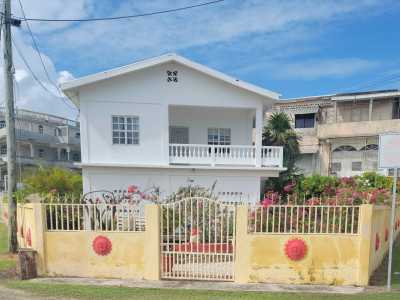
$750,000
Mixed Use For Sale
Corozal, Belize

49,000,000 THB
Villa For Sale
Hua Hin, Thailand
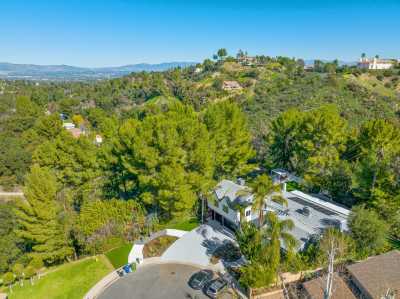
$2,620,000
Home For Sale
Tarzana, California

€450,000
Home For Sale
Central Istria, Croatia

$1,475,000
Townhome For Sale
Phoenix, Arizona
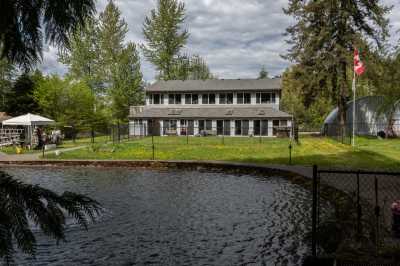
5,300,000 CAD
Home For Sale
Mission, Canada
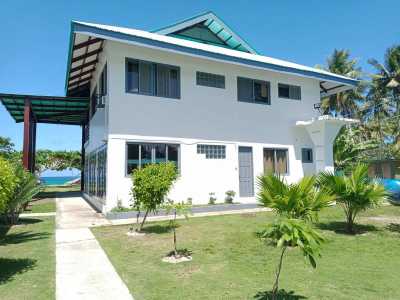
$2,800,000
Commercial New Construction For Sale
General Luna, Philippines
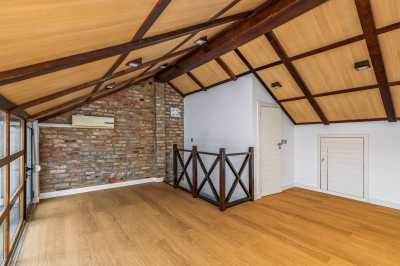
€800,000
Apartment For Sale
Lisboa, Portugal

$1,350,000
Vacation Villas For Sale
Isla Mujeres, Mexico

$1,575,000
Condo For Sale
Winter Park, Florida
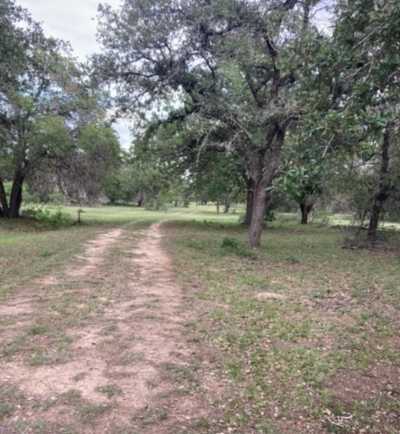
$2,500,000
Mixed-Use Land For Sale
Von Ormy, Texas
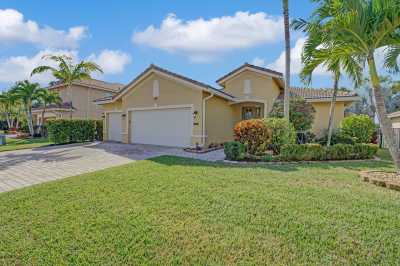
$740,000
Home For Sale
West Palm Beach, Florida
Related News Stories
Residential Real Estate Headlines
- More Americans Opting for Renting Over Homeownership in 2024
- BLOCKTITLE Global Property Tokenization Platform Announced
- Small Investors Quietly Reshaping the U.S. Housing Market in Late 2024
- Greater Miami Overall Residential Sales Dip 9 Percent in November
- U.S. Home Sales Enjoy Largest Annual Increase in 3 Years Post Presidential Election
- U.S. Housing Industry Reacts to the Federal Reserve's Late 2024 Rate Cut
- U.S. Home Builders Express Optimism for 2025
- Older Americans More Likely to Buy Disaster-Prone Homes
- NAR's 10 Top U.S. Housing Markets for 2025 Revealed
- U.S. Mortgage Delinquencies Continue to Rise in September
- U.S. Mortgage Rates Tick Down in Early December
- Post Trump Election, U.S. Homebuyer Sentiment Hits 3-Year High in November
- Global Listings Aims to Become the Future 'Amazon of Real Estate' Shopping Platform
- Greater Las Vegas Home Sales Jump 15 Percent in November
- Ultra Luxury Home Sales Globally Experience Slowdown in Q3
- World Property Exchange Announces Development Plan
- Hong Kong Housing Market to Reach Equilibrium in Late 2025
- Construction Job Openings in U.S. Down 40 Percent Annually in October
- U.S. Mortgage Applications Increase in Late October
- World Property Markets, World Property Media to Commence Industry Joint-Venture Funding Rounds in 2025
- New Home Sales Hit 2 Year Low in America
- U.S. Pending Home Sales Increase for Third Consecutive Month in October
- Pandemic-led Residential Rent Boom is Now Fizzling in the U.S.
- Emerging Global Real Estate Streamer WPC TV Expands Video Programming Lineup
- 1 in 5 Renters in America Entire Paycheck Used to Pay Monthly Rent in 2024
- U.S. Home Sales Jump 3.4 Percent in October
- Home Buyers Negotiation Power Grows Amid Cooling U.S. Market
- Canadian Home Sales Surge in October, Reaching a Two-Year High
- Greater Orlando Area Home Sales Continue to Slide in October
- U.S. Mortgage Credit Availability Increased in October
- U.S. Mortgage Rates Remain Stubbornly High Post Election, Rate Cuts
- Construction Input Prices Continue to Rise in October
- BETTER MLS: A New Agent and Broker Owned National Listings Platform Announced
- Home Prices Rise in 87 Percent of U.S. Metros in Q3
- Caribbean Islands Enjoying a New Era of Luxury Property Developments
- The World's First 'Global Listings Service' Announced
- Agent Commission Rates Continue to Slip Post NAR Settlement
- Market Share of First Time Home Buyers Hit Historic Low in U.S.
- Greater Palm Beach Area Residential Sales Drop 20 Percent Annually in September
- Mortgage Applications in U.S. Dip in Late October





